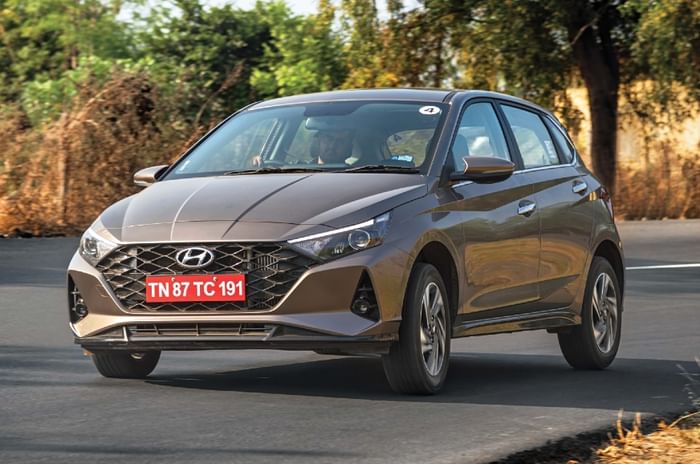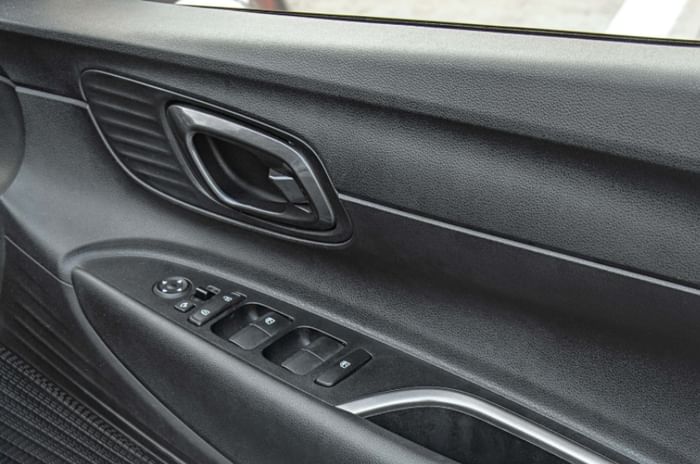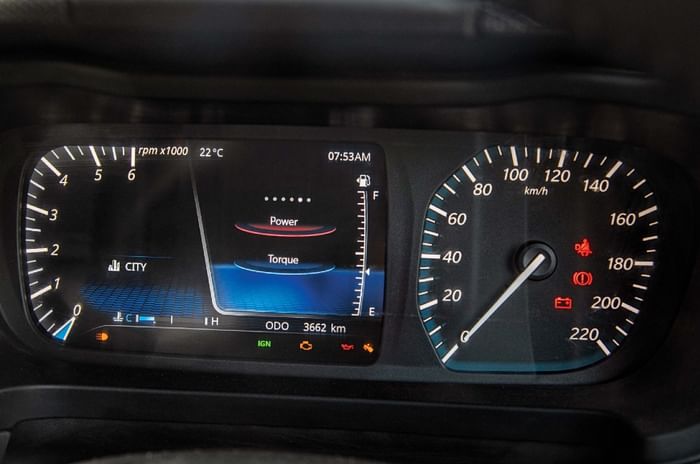Hyundai i20 vs Tata Altroz comparison
Shopping for a diesel premium hatchback? We line up ‘all’ your options.
Published on Jan 17, 2021 07:00:00 AM
1,19,204 Views
Follow us on

The Altroz is the classically handsome car. The new i20 is a sharp departure from the old-gen model.
Welcome to the latest of Autocar India’s classic comparisons. True to style, we’ve rounded up every single rival for a head-to-head matchup. In the spotlight today are diesel premium hatchbacks and the list of competitors includes the new Hyundai i20, Tata Altroz and, er, that’s it! You see, with the Maruti Suzuki Baleno, Volkswagen Polo and Honda Jazz diesels bowing out before the BS6 emission norms era, your choice of diesel premium hatchback is down to the two models you see here.

The all-new, third-gen i20 (fourth-gen if you consider the Getz an i20) hopes to pick up where the old model left off as the most upmarket of the offerings in the segment. The Tata Altroz is a heavyweight in its own right. Easily Tata’s most accomplished hatchback yet, the Altroz also started its innings with a bang, and a five-star Global NCAP rating.
The question is, which of these diesel hatchbacks should you go the distance with?
| Hyundai i20 Price, Mileage, Specifications, Features and Variants | |
|---|---|
| Brand | Hyundai |
| Model Name | i20 |
| Hyundai i20 Price | ₹ 8.01 - 14.44 lakh |
| Hyundai i20 Range/Mileage | Petrol : 16 - 20kpl |
| Hyundai i20 Specifications | Hatchback | 5 doors | 5 seats View All Specs |
| Hyundai i20 Features | LED headlight | 10.25-inch Touchscreen display | 6 airbags View All Features |
| Hyundai i20 Variants | 1.2 Petrol Era MT | 1.2 Petrol Magna MT | 1.2 Petrol Sportz MT View All Variants |

Style quotient
Both hatchbacks measure just under 4m in length, are very close in width and height, and in top-spec guise, as featured here, ride on 16-inch wheels too. The i20 has the longer (79mm longer, to be precise) wheelbase though that’s not the first thing your eyes will lock on to when looking at the Hyundai. The latest i20 is styled to stand out and the look is refreshingly radical or unnecessarily overdone, depending on your aesthetic sensibilities. Hyundai’s familiar cascading grille is XL-sized here, there are aggressive cuts on the bonnet and front bumper, and even the shoulder line has a unique triangular 3D effect. Z-shaped LEDs for the tail-lights help distinguish the i20 but interestingly enough, the sporty, blacked-out tailgate top is a detail we had first seen on the Altroz.

To most of our testers, the Altroz is the more classically handsome car. The proportions are spot on, while the slickly incorporated black stylistic embellishments under the windows lend the Tata a sporty, tipped-forward appearance. That shark nose-like grille, the large headlights and the chunky wheel arches also give the Altroz immediate visual appeal. The dual-tone treatment of the boot lid only adds more flavour to the Tata. If there’s something to bring up, it’s that the vertically-oriented rear door handles, which sit aft the windows, aren’t as convenient to use as conventional horizontal ones (on the doors) would have been.

Inside information
The fully-loaded i20 Asta (O)’s cabin makes a great first impression. The combined effect of the digital instrument cluster, the crisp and large 10.25-inch touchscreen and the sunroof immediately establish the i20 as a premium and feature-loaded car. The low-set dash is also neat (not everyone is a fan of the horizontal strakes though) and helps give a great view out, while steering rake and reach adjust makes finding a comfy driving position easy. Where the i20 will leave you wanting is, surprisingly for a Hyundai, in cabin quality. Sure, the steering is great to hold, the switches and toggle-like controls on the centre console feel nice and there’s a textured surface on the dash top, too, but there are also quite a few hard and scratchy plastics on the inside. Additionally, the all-black cabin theme makes the i20’s interior look a bit drab in daylight.

Open the Altroz’s doors (they uniquely swing open to 90 degrees) and you’ll note that it uses colours and textures to better effect. The matte finish for the centre console, the gloss band across the dash and the lighter plastics lower down work well together and help uplift the look of things. The dashboard itself looks contemporary, courtesy the high-set position of the 7.0-inch touchscreen. There are some uneven panel gaps such as around the glovebox but, on the whole, quality isn’t far from Hyundai’s standards, and that’s a big compliment for Tata Motors. It’s not perfect inside, however. The thick A pillars impede visibility around corners and the absence of steering reach adjust is also a miss. Of the other things, the instruments, with the squared-out analogue speedometer and the triangular needle-end for the digital tacho, aren’t the easiest to refer to on the go.

Feature story
Before we dive in to the equipment these cars come with, you should know that there is a substantial difference in their prices. Where the Altroz diesel starts at Rs 6.99 lakh (ex-showroom, Delhi) and tops off at Rs 8.95 lakh for this XZ(O) trim, Hyundai i20 diesel prices range from Rs 8.19-10.74 lakh. Compare the top-spec Altroz XZ(O) to the like-priced Rs 8.99 lakh i20 Sportz and you’ll find that it’s the Tata that easily packs in more for the money. While the i20 Sportz has some bragging rights with a larger and nicer 8.0-inch touchscreen, BMW-like digital instrument cluster and tyre pressure monitoring system, the Tata goes one-up with its 16-inch alloy wheels, ISOFIX child seat mounts, rear centre armrest, ambient lighting, cruise control, push button start and auto climate control.

You do get the aforementioned comfort features on the range-topping i20 Asta (O) (featured here in single-tone guise) but it’s a shame that essentials like a rear wiper and adjustable headrests are only reserved for the top version. On the plus side, the i20 Asta (O) sets a new benchmark for the segment in terms of goodies, packing in LED projector headlamps, a sunroof, an onboard air purifier, a wireless charger, a class-leading 10.25-inch touchscreen, connected tech and a great-sounding Bose sound system. ESC and side and curtain airbags are other features exclusive to the i20 Asta (O). Do note, while both cars conform to India’s latest crash standards, only the Altroz has been tested by Global NCAP, which awarded it a top safety rating.
Back benchers
Where the limited rear-seat room was a weakness of the last-gen i20, the ample room at the back is a strength on the latest model. There’s excellent legroom, a clever scoop on the roof ensures even six-footers won’t be tight on headroom, and it is the slightly more accommodating car to seat three abreast. A nicely reclined backrest only adds to the comfort.
The Altroz runs the i20 close on rear kneeroom and the cabin is about as wide as the Hyundai’s too (a flat floor also helps life for the middle passenger) but overall rear-seat comfort isn’t quite at the same level. The backrest is a touch too upright and headroom is limited; taller passengers will find their heads touching the roof. Further, the Altroz, with its smaller windows, simply doesn’t offer the same sense of space as the i20’s cabin.

It is an even match in terms of space for small items. Both cars get cupholders up front, bottle holders on all doors and large enough gloveboxes, although the Altroz’s also features handy compartments. On airport runs or trips out of town, you’ll be able to fit that little bit more into the Altroz’s well-shaped 345-litre boot. The Hyundai offers a reasonable 311 litres of space, in comparison. Both cars offer the option to fold down the rear seat backrest to free up more room, but neither gives the added flexibility of split seats.
Heart of the matter
The i20 might be available with a sporty 1.0 turbo-petrol engine too, but it’s actually this 1.5 diesel-powered version that’s the best to drive. The 100hp and 240Nm engine is responsive, delivers its power in a friendly manner and generally makes the i20 feel light on its feet. Easing the experience in town is the smooth six-speed manual gearbox and well-weighted clutch. There’s a step up in power at about 1,800rpm that stays with you right till 4,000rpm, giving you a wide band to play in. And you can have some fun with this engine. 0-100kph takes a brisk 10.42 seconds and performance is more than satisfactory through the gears too. There’s a gravelly note from the engine above 2,000rpm but in everyday driving you’ll actually be impressed by the levels of engine refinement.

Like the i20, the Altroz also feels its best in diesel guise. The thing is, the Tata’s 90hp, 200Nm, 1.5 diesel never feels as well accomplished as the Hyundai unit. For starters, while the in-gear acceleration numbers (measured at full throttle) are impressive on paper, performance in everyday drives will leave you wanting. Part-throttle responses are humdrum and there’s also an unusual throttle lag that you have to contend with, which is irritating in town. Things do improve as you build up to cruising speeds and what’s also nice is the inclusion of drive modes that let you choose between efficiency (Eco mode) and power (City mode).
The Tata engine is significantly noisier though, both at idle and on the move. The absence of a sixth gear also comes into play here. Where 100kph in sixth translates to 1,900rpm in the Hyundai, 100kph in fifth equates to a higher 2,200rpm in the Altroz, which isn’t as relaxed over long drives. For its part, the Tata’s five-speed gearbox is nice enough to use, but the clutch does require precise modulation, especially when starting out. In the end, it’s the small things that add up to suggest a somewhat lack of finesse in the engine and gearbox department.

There’s little between the two models in terms of official fuel economy, with ARAI ratings of 25.2kpl and 25.11 kpl for the i20 and Altroz, respectively. While we couldn’t put the duo through our fuel run, we expect both cars to deliver upwards of 15kpl in town and 20kpl on the highway.
Comfort zone
Good low-speed ride comfort has always been an i20 forte and that’s an area where the latest model impresses as well. The i20 rounds off the bumps really well with little noise from the suspension. The good news is that high-speed manners have also improved greatly with this generation; it neither feels loose at the helm nor does it bob around. In fact, the driving experience is quite mature, with good straight-line stability and a well-damped ride being elements of the experience. The steering is smooth, too, making the i20 reasonable fun to drive in corners.

It’s the Altroz, however, which is the more enjoyable hatchback on a winding road. Steering weight is really well judged, grip levels are good and even body movements are well contained. The Altroz also feels that bit more sure-footed on the highway and what also helps is how confident the Tata feels under hard braking. Where the Altroz falls short is in sound insulation. There’s plenty of road noise that seeps into the cabin and this is all the more noticeable over long journeys. Decibel levels jump up considerably on concrete surfaces that make up many new highways. At lower speeds, the firmer-setup Altroz can feel a bit fidgety and doesn’t filter out surface imperfections as well as the i20. Show the Altroz a really bad patch though and, like other Tatas, it feels like a car built to take a beating.
At a premium
With its eye-catching looks, keener pricing and that stamp of safety, the Altroz will be a no-brainer for a lot of buyers. The Tata is well made on the inside too, makes for a confident highway car and also feels India-proof thanks to its robust build. But for all its strengths, the Altroz also leaves you wondering how much better it could have been, had the engine been more energetic and if refinement was better.

The smoother and quieter Hyundai i20 offers a far more polished driving experience in comparison and this is a fact that won’t be lost on buyers in the segment. The i20’s easily got the nicer diesel engine, has the plusher low-speed ride and is also the one with the roomier and comfier cabin. On the flipside, the i20 diesel is pricey by class standards and the features of interest are skewed to the higher-spec variants. Then again, the range-topping i20 Asta (O) is also the best equipped car for the money, and the premium money does get you the more premium package.
All things considered, buyers on a fixed budget will be content with the Altroz. But if you are open to the idea of spending big for a small car that does it all, the i20 diesel is our pick.
Also see:
2021 Tata Altroz iTurbo first look video
Tata Altroz iTurbo revealed before January 22 launch
Hyundai i20 vs Tata Altroz diesel comparison video
Copyright (c) Autocar India. All rights reserved.







Comments
Member Login
Personal Details
No comments yet. Be the first to comment.